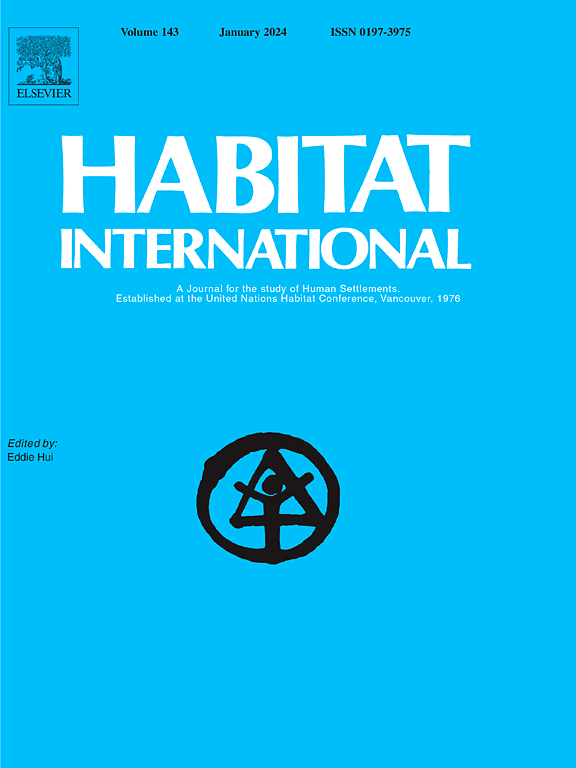1985年至2015年的全球城市化在土地消耗方面是否有效?
IF 6.5
1区 经济学
Q1 DEVELOPMENT STUDIES
引用次数: 0
摘要
高密度同居比低密度同居具有更高的生态可持续性和经济效益。当然,高密度也带来了许多挑战,但从土地消耗的角度来看,全球城市化的趋势是积极的。然而,在城市内部和城市之间,城市化和人口密度的发展非常不均衡。在这项研究中,我们分析了1985年至2015年全球1567个主要城市的形态和人口扩张。因此,我们研究了新建区域的形态和人口密度与1985年现状的变化。此外,我们利用世界各地城市的不同密度来设计替代土地消耗的理论追溯情景,并确定可能的承载能力。主要发现是:1985年至2015年间建成的地区在形态和人口密度方面都低于1985年之前建成的地区。因此,城市扩张消耗了相对较多的土地,这意味着它在空间利用方面变得更加低效。我们还发现,这种低效率在全球范围内有所不同,南亚和东亚的人口密度高于欧洲和北美。所开发的情景显示了未利用的潜力:如果城市扩张更加密集,例如通过“紧凑的中层”结构进行开发,我们的模型计算显示,在相同的新建城市地区,可以多居住14.66亿人。本文章由计算机程序翻译,如有差异,请以英文原文为准。
Was global urbanization from 1985 to 2015 efficient in terms of land consumption?
Dense cohabitation is associated with higher ecological sustainability and economic benefits than their less dense counterparts. Of course, there are also many challenges associated with high density, but from the perspective of land consumption, the global trend of urbanization is viewed positively. Urbanity and density, however, are and continue to develop very heterogeneously within and between cities. In this study, we analyze morphologic and demographic urban expansion across 1567 major cities around the globe from 1985 to 2015. Thereby, we investigate the changes in the morphological and population densities in the newly built areas in comparison to the status quo in 1985. Furthermore, we use the different densities in cities around the world to design theoretical retroactive scenarios of alternative land consumptions and determine possible carrying capacities. The key findings are: areas built between 1985 and 2015 are less dense in terms of morphology and population than the areas built before 1985. Thus, urban expansion consumed comparatively more land which means that it has become more inefficient with respect to the usage of space. We also find that this inefficiency varies around the globe, with South Asia and East Asia having higher densities in contrast to Europe and North America. The scenarios developed show the unutilized potential: If urban expansion would have been developed more densely, e.g. by ‘compact mid-rise’ structures, our model calculations show that 1.466 billion more people could live in the same newly built urban areas.
求助全文
通过发布文献求助,成功后即可免费获取论文全文。
去求助
来源期刊

Habitat International
Multiple-
CiteScore
10.50
自引率
10.30%
发文量
151
审稿时长
38 days
期刊介绍:
Habitat International is dedicated to the study of urban and rural human settlements: their planning, design, production and management. Its main focus is on urbanisation in its broadest sense in the developing world. However, increasingly the interrelationships and linkages between cities and towns in the developing and developed worlds are becoming apparent and solutions to the problems that result are urgently required. The economic, social, technological and political systems of the world are intertwined and changes in one region almost always affect other regions.
 求助内容:
求助内容: 应助结果提醒方式:
应助结果提醒方式:


